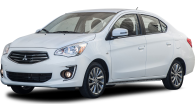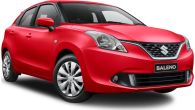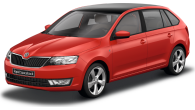Back in 1987 when the locally assembled second generation Camry was launched the front-wheel drive mid-sized Toyota was still finding its feet in the local market.
With its tried and true formula of good build quality, reliability, practicality and frugality, Toyota had high hopes the Camry would win over the hearts and minds of Australians, and while it proved a winning formula with families and older motorists it didn't cut the mustard with younger buyers who regarded it as bland and boring.
Today, it's the renowned reliability that attracts those looking for cheap and cheerful motoring.
Model watch
The Camry first arrived here in 1983 as an import from Japan, but with the introduction of the second generation (SV20) model in 1987 Toyota began producing it at its plant in Port Melbourne.
It was a neat, pleasant looking car, with smooth lines and classic proportions, and available as a four-door sedan or wagon with a range of models to suit most needs and wants.
Mechanically, it was a conventional front-wheel drive mid-sized car with a choice of four and V6 engines driving through either a five-speed manual or four-speed automatic transmission.
The range kicked off with the sparsely equipped SE, which was available as a sedan or wagon. It was only available with the 1.8-litre four-cylinder engine, but there was the option of a manual gearbox or automatic transmission.
Topping the range was the Ultima, which was only available as a sedan.
Its standard features included an AM/FM radio, a centre console with a storage compartment, remote fuel filler release, intermittent windscreen wipers, and a digital clock. The only option offered was power steering.
Next was the CS, which like the SE was available as a sedan or wagon. Similarly it was only available with the 1.8-litre engine, but there was the choice of a manual gearbox or automatic transmission.
Its standard features list was slightly longer than the SE's; it had a tilt-adjustable steering column and an AM/FM radio cassette player.
The CS-X was also available as a sedan or wagon. It came standard with a 2.0-litre engine and the option of a manual gearbox or automatic transmission.
Its list of standard features included four-speaker sound, a power antenna, variable intermittent windscreen wipers, and a centre armrest in the rear.
A V6 model was also released in 1988 as Toyota sought a slice of the local six-cylinder market.
Topping the range was the Ultima, which was only available as a sedan. It had a 2.0-litre engine and was only available with an automatic transmission.
It had the added features of power windows, cruise control, velour trim and a graphic equaliser for the sound system.
An Executive model was added to the range in 1988 to appeal to fleet buyers. It was based on the SE, but had automatic transmission, power steering and air conditioning, although the air was manual, not automatic climate control.
A V6 model was also released in 1988 as Toyota sought a slice of the local six-cylinder market. It was an imported model and fully optioned.
An update in 1989 saw the engine in the SE and CS upgraded to the 2.0-litre twin-cam carburettor engine.
The same update also brought improved headlights, suspension and steering.
A final makeover, this one in 1991, brought a 2.0-litre multi-point fuel-injected 2.0-litre twin-cam engine, power steering was made standard, and Toyota's corporate badge replaced the company’s name on the grille.
Notably, the 1991 update saw the Ultima became the first Australia-built car to be fitted standard with a CD-player.
Built long before the advent of most comfort and convenience features regarded as must-haves today, the SV20 Camry doesn’t boast things like Bluetooth, so iPhones and Android devices won't work; there was no sat nav or touch screen, no sunroof, it didn't have parking sensors or a reversing camera and there was no park assist.
Cabin
Aimed as it was at families, the Camry offered decent accommodation for the average five-member tribe.
Those in the front were treated to comfortable seating with reasonable head and legroom; the rear was more suited to kids than adults.
There was a good-sized boot to carry most of the things families needed to transport.
The trim was hard wearing and pleasant cloth, the dash was awash with plastics, but well laid-out and easy to use.
Engine
At the launch the engine in the entry model SE and the CS was an imported 1.8-litre four-cylinder petrol unit with a single overhead camshaft and single point fuel injection.
With 64kW (85 horsepower) of peak power and a maximum of 145Nm of torque performance was modest rather than racy.
The engine in the CS-X and Ultima was a 2.0-litre twin-cam with a carburettor, which produced peak power of 82kW.
The V6 was a silky smooth double-overhead camshaft 2.5-litre engine that boasted 117kW (157 horsepower) and 245Nm at its respective power and torque peaks.
With unleaded petrol introduced in 1986 the SV20 Camry was the first model designed for the new fuel.
Introduced in the 1991 update, the pick of the engines was the 2.0-litre twin-cam engine with multi-point fuel injection, which produced 88kW and 171Nm.
With unleaded petrol introduced in 1986 the SV20 Camry was the first model designed for the new fuel.
It's recommended that Camrys fitted with carburettors are not run on E10 ethanol blend fuel, but those with the fuel-injected engines can be run on the alternative fuel.
The transmission choices were a five-speed manual gearbox or a four-speed automatic.
Driving
The performance was steady rather than thrilling, but it was adequate for the day, whether driving around town where it had sufficient zip to hold its own in traffic, or out on the highway where it could cruise along at the speed limit and have a little left over to overtake.
Handling was assured and balanced, without being sports car sharp, braking was solid, and the steering was light.
Overall, it was easy to drive with good visibility all round.
Safety
There was none of the safety features expected in a car today, those in the SV20 had to rely on basic safety features like the structural integrity of the body, the collapsible steering column, and the seat belts.
There were no airbags, not even as options, and it didn’t have ABS braking, traction control, or ESP electronic stability control.
Those in the front seats had lap/sash seat belts, so too did those in the rear outer seats, but the one condemned to sitting in the centre rear had to make do with a lap belt.
Baby car seats could be used in the rear outer seats with the lap/sash belts, but there were no ISOFIX child seat restraints.
The Used Car Safety Ratings, published in 2008 by the Monash University Accident Research, found that the SV20 Camry provided occupants with only an 'average' level of safety protection in the event of a crash.
Parents often buy the SV20 Camry for their kids, about to hit the road for the first time, on the basis of its reliability and economy. Same with families looking for a cheap and cheerful second car for mom to drive. But it’s not a wise move given its lack of even the basic of today’s safety features.
Any common issues?
If history is a good guide, little goes wrong with the SV20 Camry, but it has now reached an age (and accumulated kilometres) that means problems should be expected to occur simply because of normal wear and tear.
Buying any car of the age of the SV20 is asking for trouble unless you do your homework and shop around for the car in the best possible condition and with the lowest possible odometer reading.
By doing that you can minimise the chances of getting stuck with an unreliable lemon.
A service record showing regular maintenance is also important, old oil left unchanged will quickly develop sludge and ultimately kill the engine.
Dip the oil to make sure it's clean and without sludge.
When driving the car look for smoke from the tailpipe that could indicate a worn engine, listen for clunks and knocks from the suspension and steering that might suggest wear, and take note of the way the gearbox operates.
Toyota recommended servicing the Camry every 10,000km/12 months.
You should be able to select gears smoothly without any baulking in a manual gearbox, and the automatic should engage gears without any hesitation or slipping.
Both four-cylinder engines and the V6 have cam timing belts, which should be changed at 150,000km intervals.
The SV20 Camry carried a warranty of two years/50,000 km when new.
It was released long before the introduction of capped price servicing, but service costs are reasonable and any competent mechanic can do it.
Toyota recommended servicing the Camry every 10,000km/12 months, whichever came first.
MORE: If anything crops up, you'll probably find it on our Toyota Camry problems page.
Toyota Camry 1987: GLi
| Engine Type | Inline 4, 2.0L |
|---|---|
| Fuel Type | Leaded Petrol |
| Fuel Efficiency | 9.5L/100km (combined) |
| Seating | 5 |
| Price From | $2,640 - $4,070 |
Verdict
Owners' views
Justin Hill: Great little car, plenty of space, easy on fuel, good daily driver.
Aaron Turner: I’ve owned two of these Camrys and have been happy with both. They were economical, easy to drive, and run forever.
John Oliver: Overall ours has been an excellent car. It's been reliable, economical, and a great learning car for our kids. The only issues are the faded trim and broken plastic bits and pieces inside, but they're not a big deal.
Michael Potter: I'm the third owner of mine and I use it for commuting to uni. It’s easy to drive, comfortable, economical, and so far reliable.
Rivals
Mitsubishi Magna – 1987-1993
Once a popular mid-sized family option, but now beyond its use-by date.
1.5 stars.
Ford Falcon – 1987-1993
Large, but tough mechanicals capable of going the distance.
2 stars.
Nissan Pintara/Ford Meteor – 1987-1992
Once a Camry rival, now an orphan best forgotten.
1.5 stars
Verdict
Once a family favourite, but now of an age to make it a risky buy.
Rating
2 stars.
Specifications
Built: Australia (V6 built in Japan)
Body: 4-door sedan, 4-door wagon
Models: SE, CS, CSX, Ultima, Executive, V6
Seats: 5
Engine: 1.8-litre 4-cyl, 64kW/145Nm; 2.0-litre 4-cyl, 88kW/171Nm; 2.5-litre V6, 117kW/215Nm
Gearbox: 5-speed man, 4-speed auto
Drive: front-wheel drive
0-100 km/h: N/A
Fuel consumption: 9 L/100 km avg.
Fuel: 91-octane unleaded petrol
Fuel tank capacity: 60 litres
Oil: 10W-40
Front suspension: independent
Rear suspension: independent
Turning circle: N/A
Safety rating: N/A
Spare: full sized
Kerb weight: 1130-1340 kg
Towing capacity: N/A
Ground clearance: N/A
.jpg)
.jpg)
.jpg)
.jpg)
.jpg)
.jpg)

.jpg)

.jpg)










































